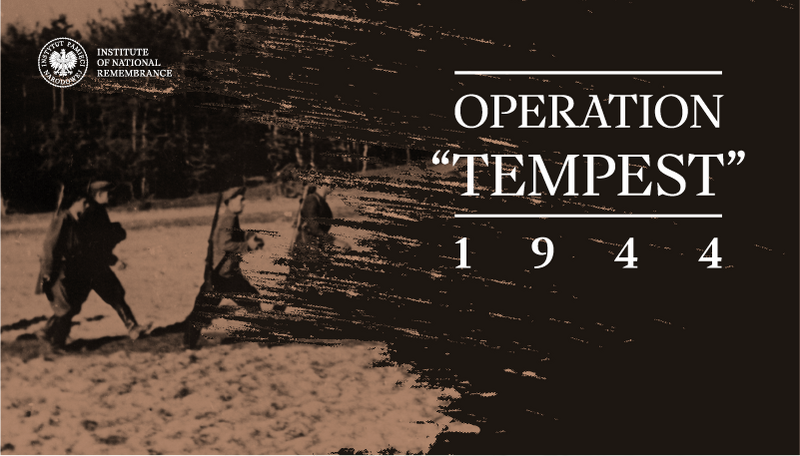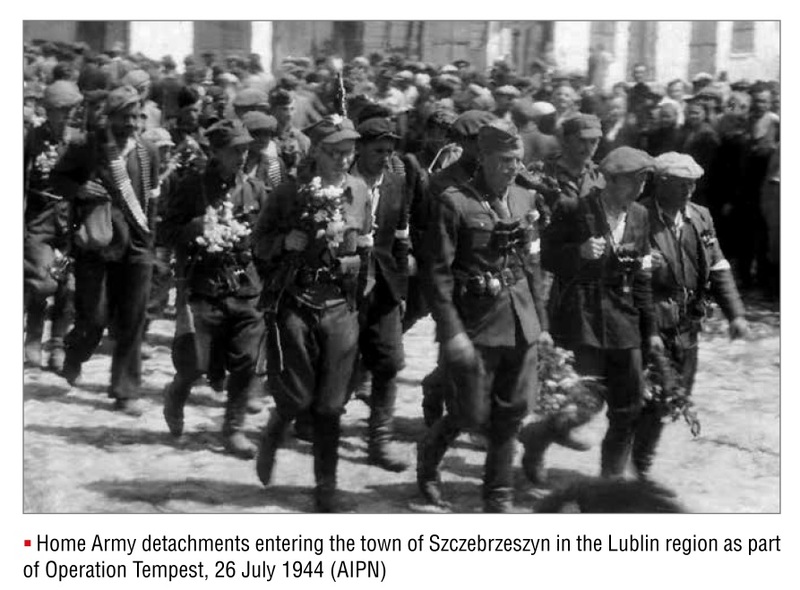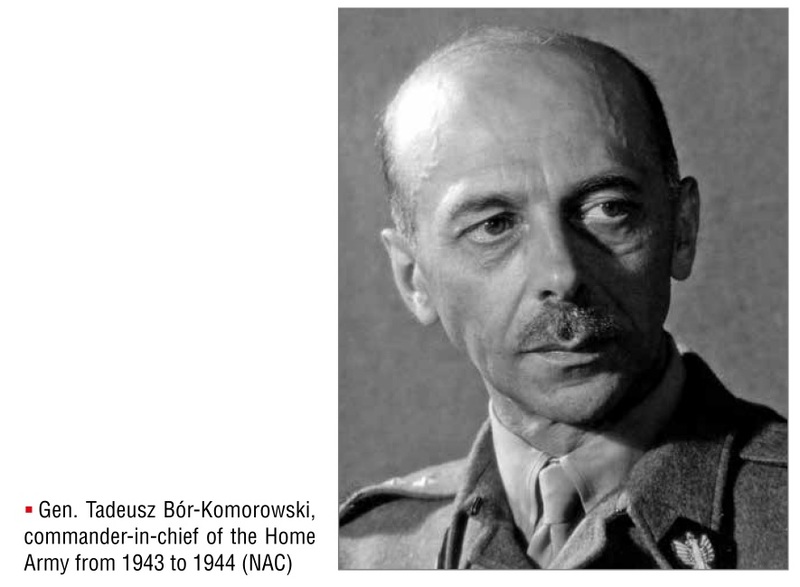The Home Army's political-military operation against the Germans lasted from 4 January 1944, when the Red Army crossed the pre-war Polish border, until January 1945. Two years earlier – on 14 February 1942 – Commander-in-Chief General Władysław Sikorski transformed the Union of Armed Struggle into the Home Army and appointed General Stefan Rowecki as its commander.
During the German occupation, plans for the so-called general uprising were being devised in the Polish underground state. Secret military structures were being established, partisans trained and arms stockpiled so as to exploit an opportune moment and attack the Germans with the support of Polish units in the West: the air force and the parachute brigade. The insurgency was to erupt simultaneously all over the country when the German power showed signs of weakening. In this way, Poland would be liberated by the Western Allies and the Polish Armed Forces. This idea would have had a chance of succeeding if the English-American Balkan invasion plan was implemented. While the Balkan second front came to naught (also under pressure from the USSR), the hopes flickered on with the success of the Allied offensive in Italy, where Sicily and the entire southern part of the Apennine Peninsula had been liberated by December 1943.
Gradually, the prospect of an invasion by the Red Army, hostile towards Polish aspirations to independence, was becoming ever more realistic. The Poles felt they had to modify their original armed resistance plans to ensure that their military and political resonance would force the USSR to respect the coalition principles contained in the Atlantic Charter towards the Republic of Poland and to recognize its sovereignty.
In this situation, a new design of anti-German insurrectionist activity of the Home Army was developed, called Operation Tempest, which consisted in armed action conducted not simultaneously throughout the country but in individual regions just before the coming of Soviet troops. The intention was to organize local uprisings immediately behind the German line of the front and to have Polish forces liberate larger and smaller towns so as to appear before the Soviets as allies and hosts. Civilian and military structures, once revealed, were to assume the duties of Polish administration and police force, ready to fight on against the Germans at the side of the Soviets as part of the anti-German coalition. It was assumed that political and propaganda reasons along with support from the British and Americans would force the Soviets to respect Polish power bodies and their sovereignty.
Following the logic of war Poland – with no other means of pressure – counted on its military efforts sparking political and propaganda reverberations in the Allied camp.
In January 1944, the Red Army crossed the eastern border of Poland for the second time during the war. On 20 January 1944, the government of the Republic of Poland issued a statement that “the Polish Nation categorically and unconditionally rejects Soviet claims to the eastern territory of the Polish State”.
The first Polish units of the Home Army that embarked on the implementation of the operation "Tempest" were active in Volhynia. Early in July 1944 the detachments from the regions of Vilna and Nowogródek battled with the Germans for Vilnius over the course of a few days. The Red Army joined the skirmishers in the city. The Home Army also participated in the fight for Lvov and hundreds of other cities and towns.
While fighting on the front lasted, Soviet commanders made use of the aid offered by the AK and frequently officially expressed gratitude for its support in the struggle against the Germans. However, when fighting ceased, the Soviets insidiously arrested Home Army commanders, some during specially organized joint “command councils”. At the same time, they began to disarm and arrest the thousands of remaining AK soldiers. Some were incorporated into units subordinated to Moscow, others arrested and sent to labor camps deep in the USSR. Those who tried to keep their freedom and resist were ruthlessly murdered by the Soviets. Mass Soviet reprisals against Polish civilians resumed as well. The new occupation of eastern Poland became a fact.
All these actions, however, took place in territories which Stalin openly claimed for the Soviet Union. The Poles did not know how the Soviets would act west of the Bug River (the “Curzon line”), the territory which they officially did not deny as belonging to the Polish state. Therefore, as part of the operation "Tempest" the armed forces of the Home Army also joined the fight in the environs of Lublin, Rzeszów, eastern Mazovia, around Cracow, and near Kielce, liberating hundreds of towns on their own.
LEARN MORE about the HOME ARMY
READ MORE in the publication: The Fighting Republic of Poland 1939–1945



